Spring flowers & 'hornfaced bees'. / Frühlingsblumen & 'Mauerbienen'.
|
After waiting so long finally spring is approaching. Even if most of the days are still rather cool, some plants in our garden are already blossoming. I made a few photos and hope you will enjoy them as much as I did when I saw the first flowers of the year. :) |
Nach langer Wartezeit kommt allmählich der Frühling. Obwohl die meisten Tage noch ziemlich kühl sind, blühen schon einige Pflanzen in unserem Garten. Ich habe ein paar Fotos gemacht und hoffe, ihr freut euch genauso darüber wie ich mich über die ersten Blumen des Jahres. :) |
| A 'squill' (genus Scilla). | Ein 'Blaustern' (Gattung Scilla). |
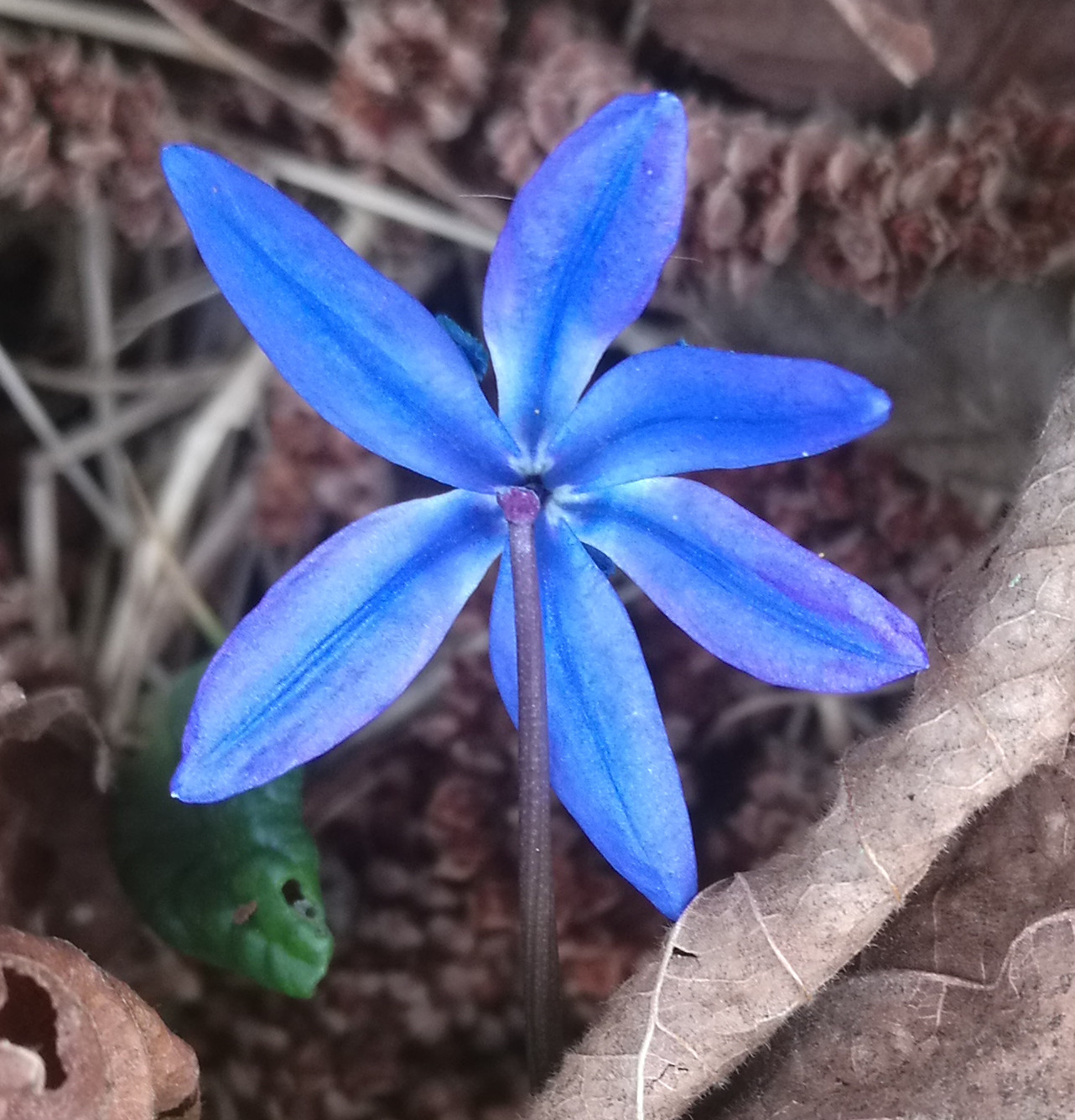
| Violet crocuses (genus Crocus). | Violette Krokusse (Gattung Crocus). |
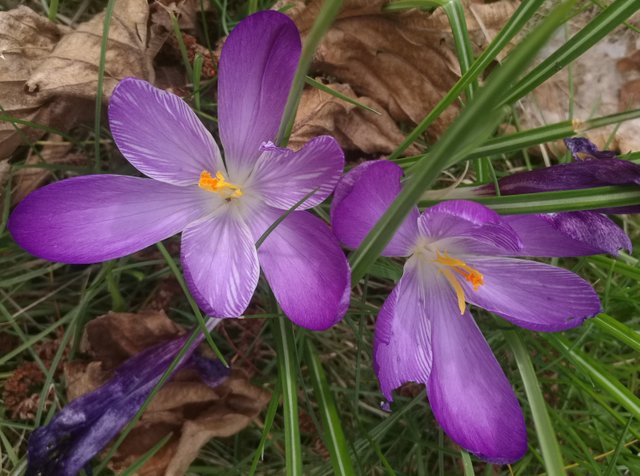
| The flower of the 'dandelion' (Taraxacum officinale) is a valuable food source for bees and other insects. | Die Blüte des 'Löwenzahns' (Taraxacum officinale) stellt für Bienen und andere Insekten eine wichtige Nahrungsquelle dar. |
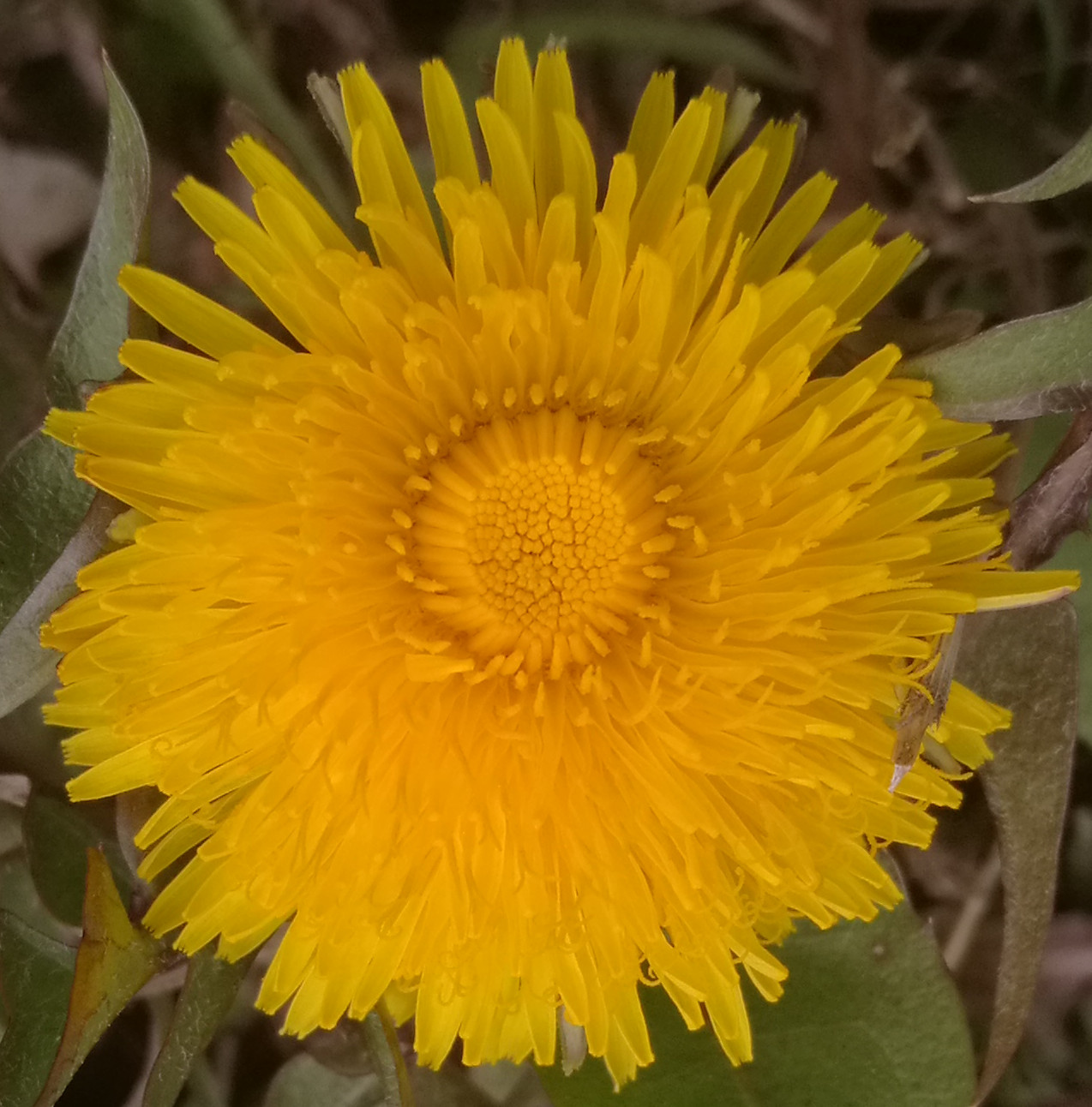
| A plant of the genus Erica. | Heidekraut, Gattung Erica. |
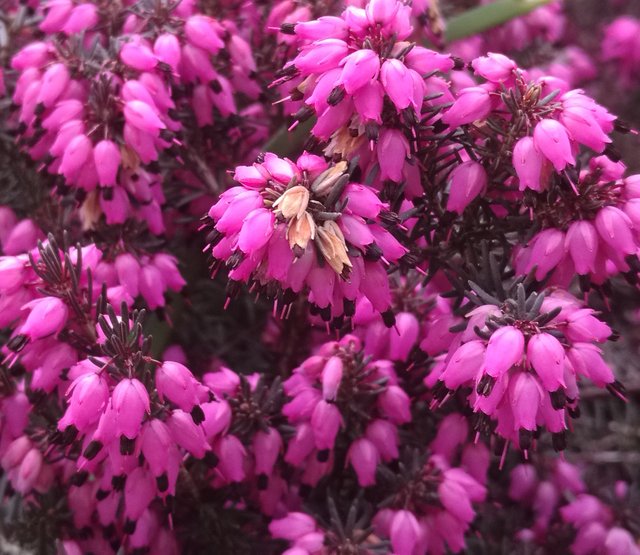
| This species belongs to the genus Muscari. | Traubenhyazinthen, Gattung Muscari. |
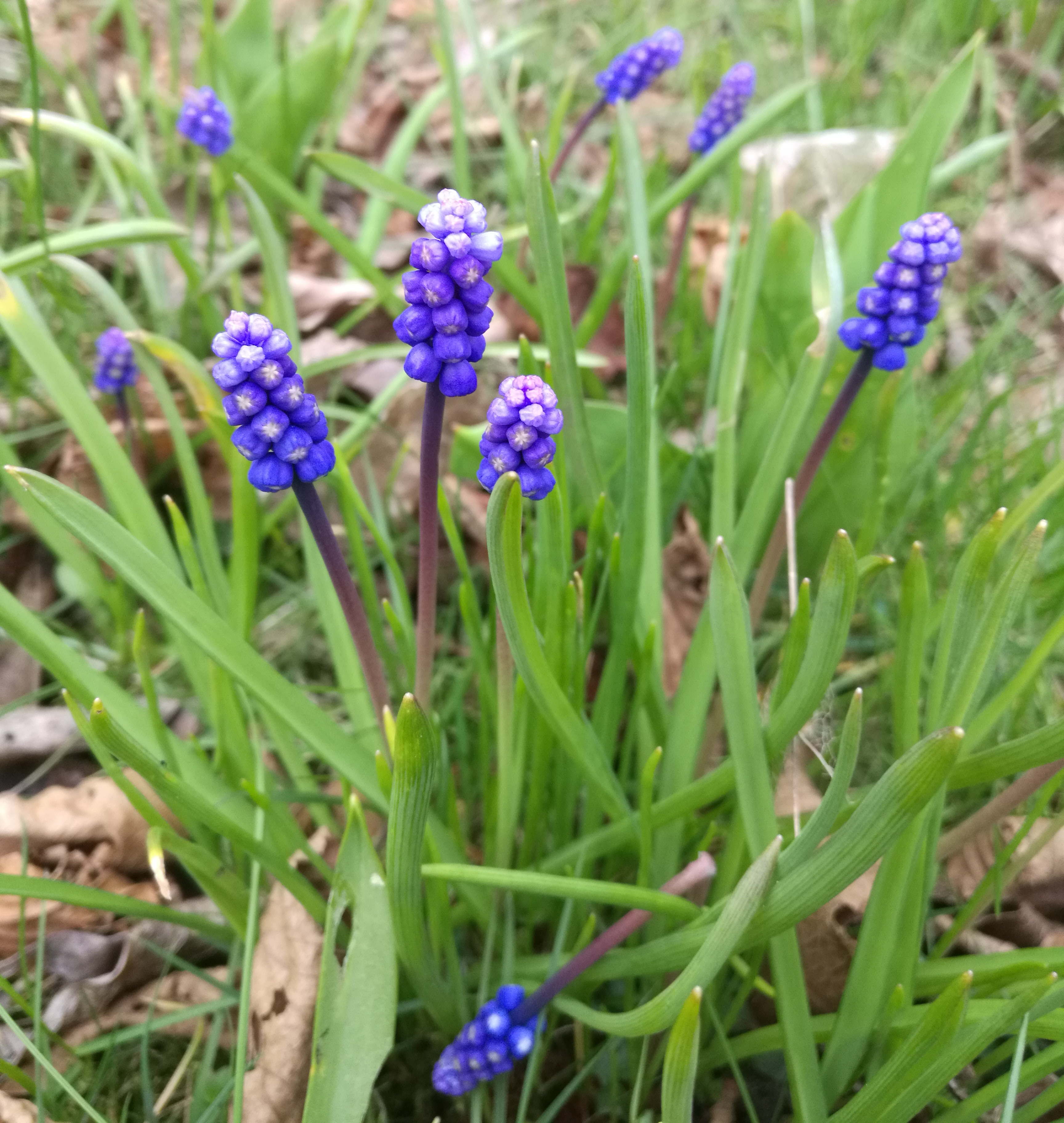
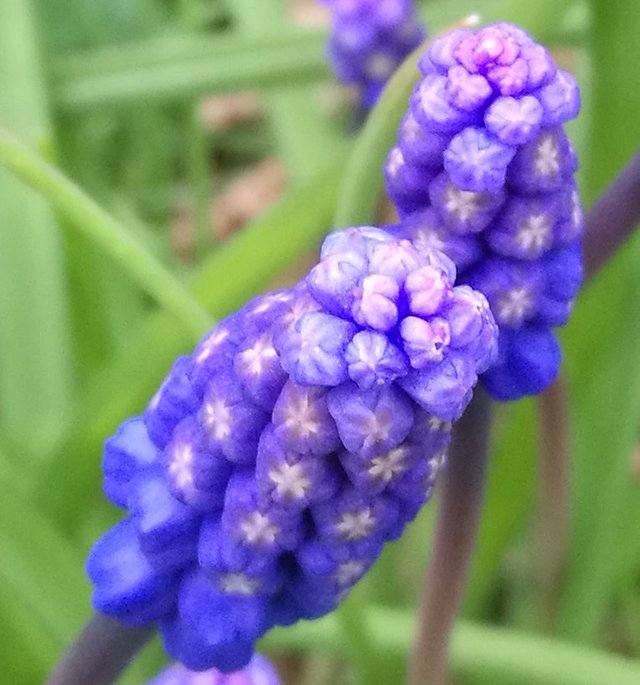
| The next picture shows flowers of (Forsythia × intermedia) which unfortunately aren't interesting for bees but nevertheless very beautiful. | Das nächste Foto zeigt für Bienen leider uninteressante, aber dennoch sehr schöne Blüten der Forsythie (Forsythia × intermedia). |
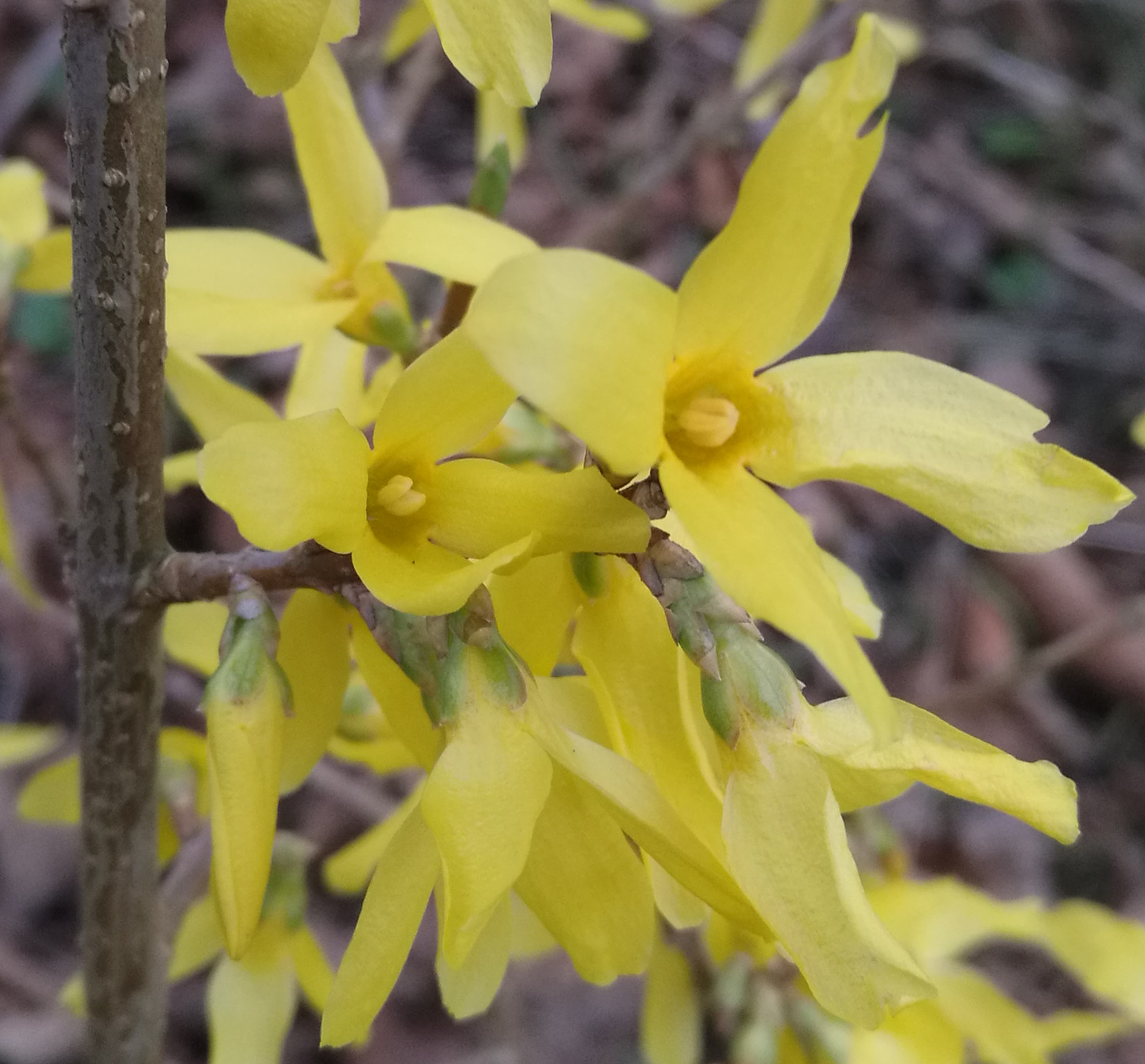
| We had bought the bulbs of these hyacinths, genus Hyacinthus, in Barcelona. | Die Zwiebeln dieser Hyazinthen, Gattung Hyacinthus, stammen ursprünglich aus Barcelona. |
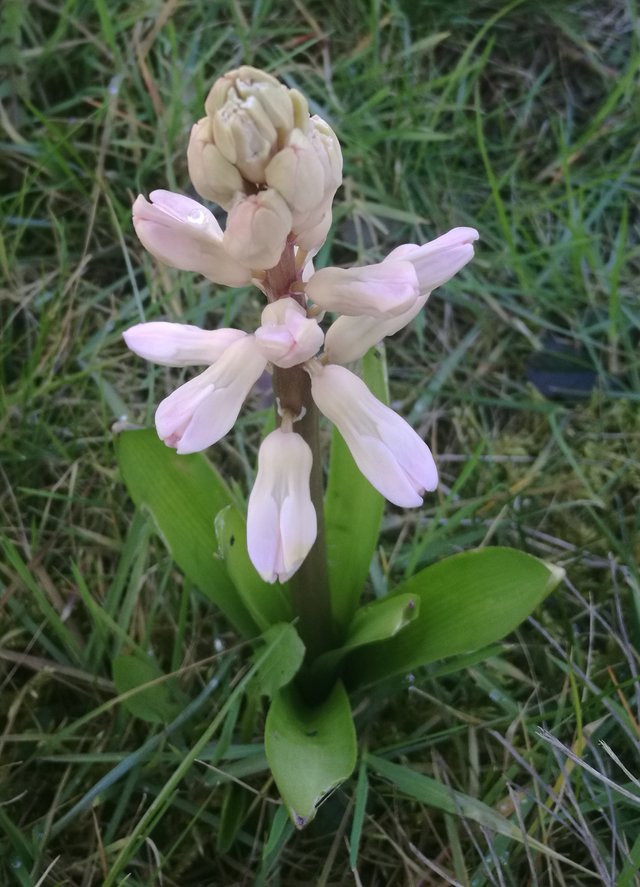
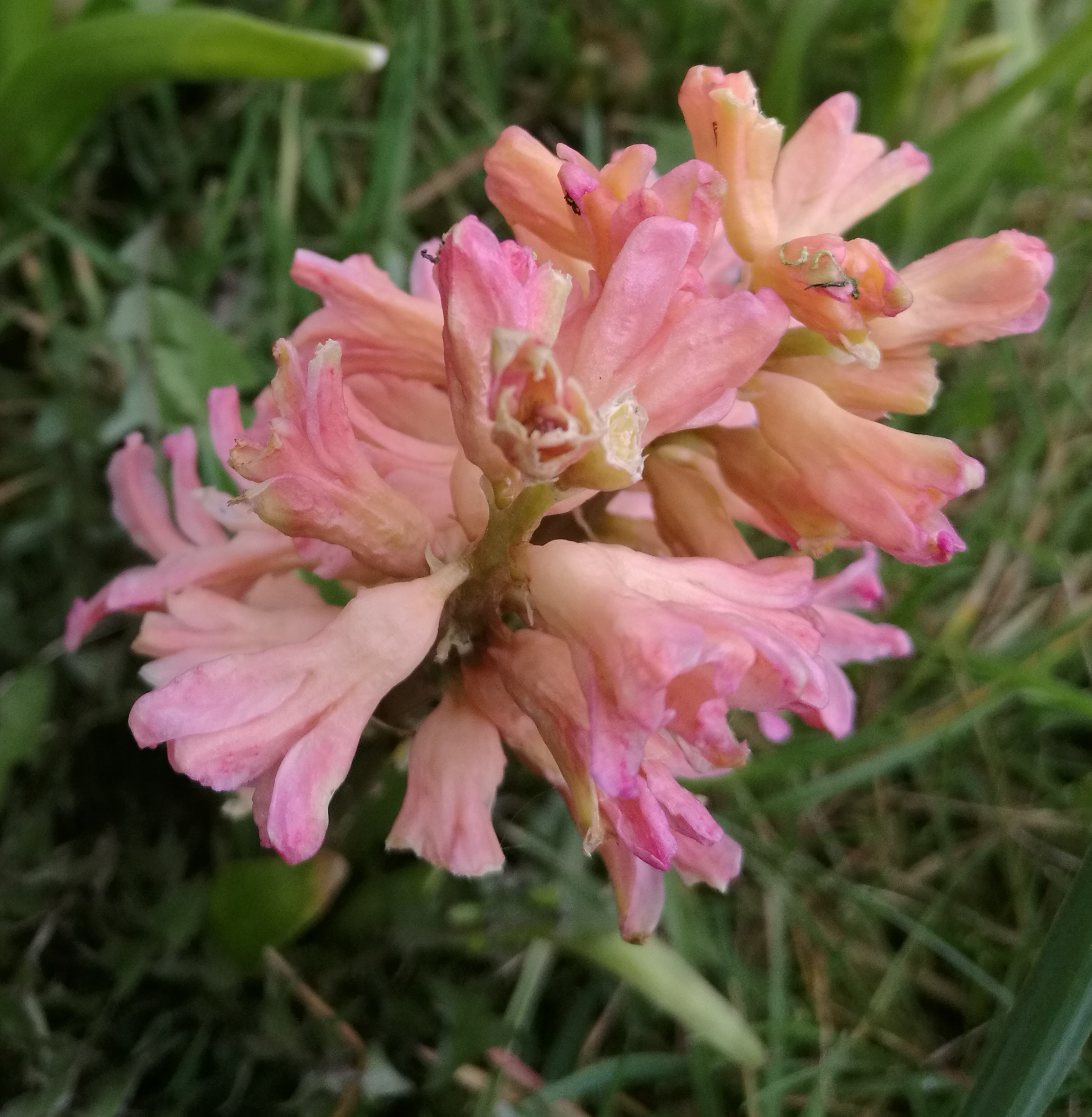
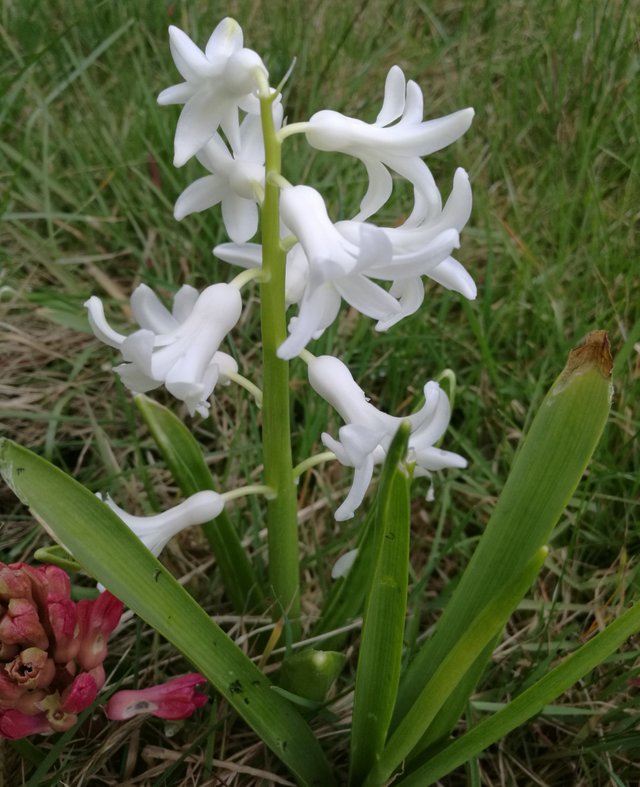
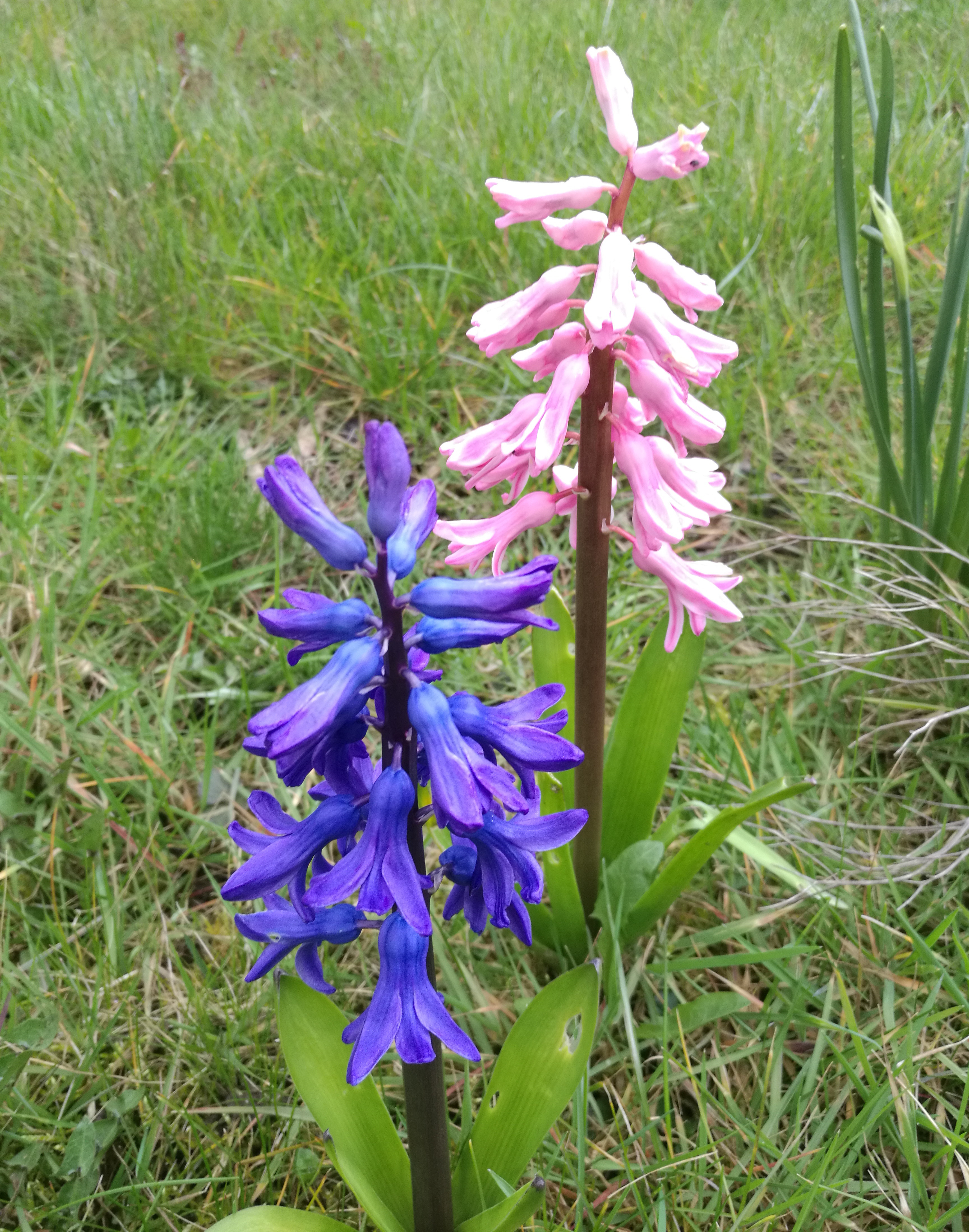
| Wild daffodils (Narcissus pseudonarcissus) with small beetles and a 'hornfaced bee' (Osmia cornuta). | 'Osterglocken' (Narcissus pseudonarcissus) mit kleinen Käfern und einer 'gehörnten Mauerbiene' (Osmia cornuta). |
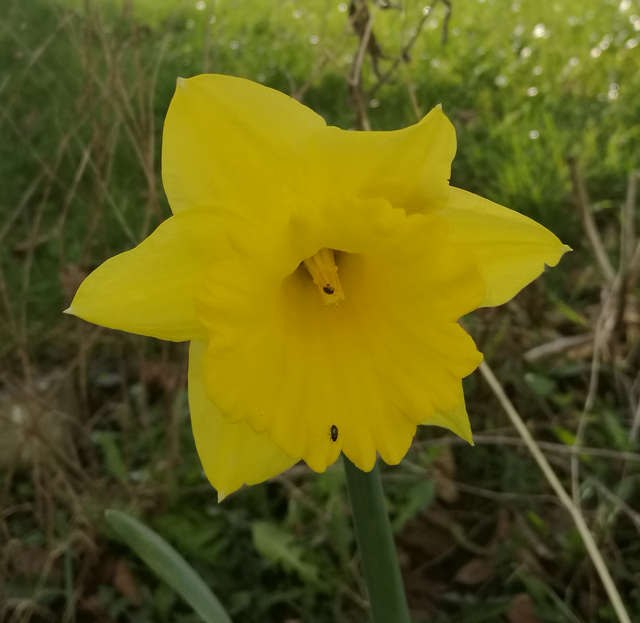
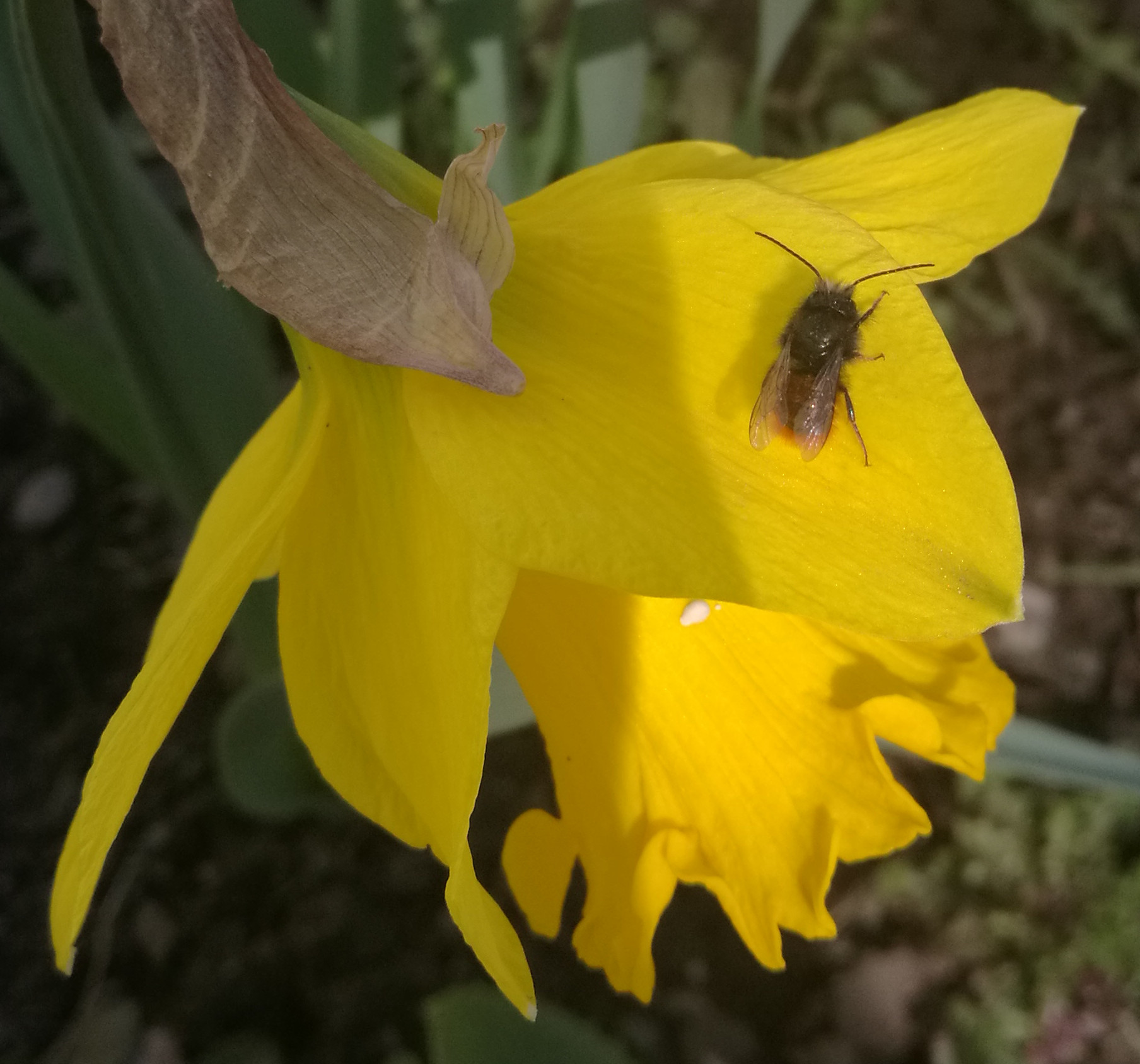
|
'Hornfaced bees' (Osmia cornuta) belong to the solitary bees. One can observe them already in March. These bees don't live in the nesting aids provided by us (below you can see some small tubes made of bamboo), but use the holes for egg deposition: one hole becomes divided in several chambers, each filled with an egg and some feed. The first chamber doesn't contain an egg so that birds, which pierce through the thick closure made of mortar, don't get anything to eat - clever insects. :) Out of the eggs hatch larvae which later pupate. The young bees eclose from the pupa and hibernate in their chambers. When spring is coming they break through the mortar closures and leave the nest. Straightaway male and female bees mate, and the females lay eggs, so that the cycle of life begins again. |
'Gehörnte Mauerbienen' (Osmia cornuta) gehören zu den solitär lebenden Wildbienen und werden schon ab März aktiv. Diese Bienen leben nicht in den von uns zur Verfügung gestellten Nisthilfen (unten seht ihr welche, die aus Bambusröhrchen hergestellt wurden), sondern nutzen deren Löcher zur Eiablage: Ein Loch wird, vorne durch einen dicken Mörtelpfropfen verschlossen, in mehrere Kammern unterteilt, in die jeweils ein Ei zusammen mit etwas Futter gelegt wird. Die erste Kammer direkt hinter dem Verschluss enthält übrigens kein Ei, damit hungrige Vögel ins Leere picken, falls sie den Pfropfen durchstechen - clevere Insekten! :) Aus den Eiern schlüpfen Larven, die sich dann verpuppen. Die aus den Puppen schlüpfenden jungen Bienen überwintern in ihren Kammern, brechen im nächsten Frühjahr die Verschlüsse auf und verlassen ihr "Nest". Dann paaren sich sofort männliche und Weibliche Bienen, die Weibchen legen Eier, und der Zyklus des Lebens beginnt von Neuem. |
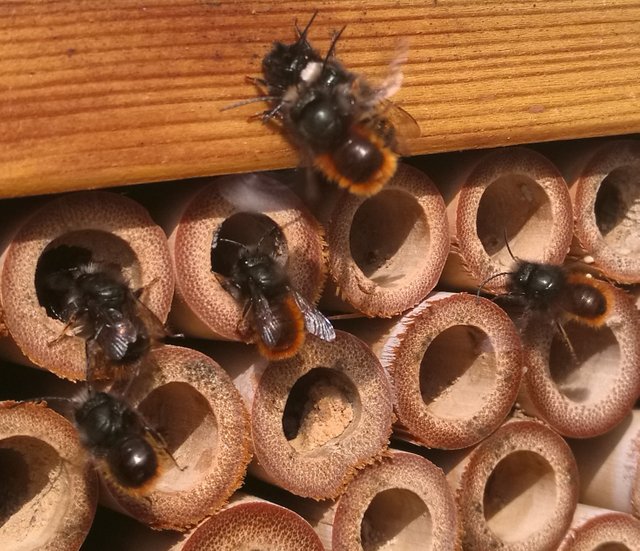

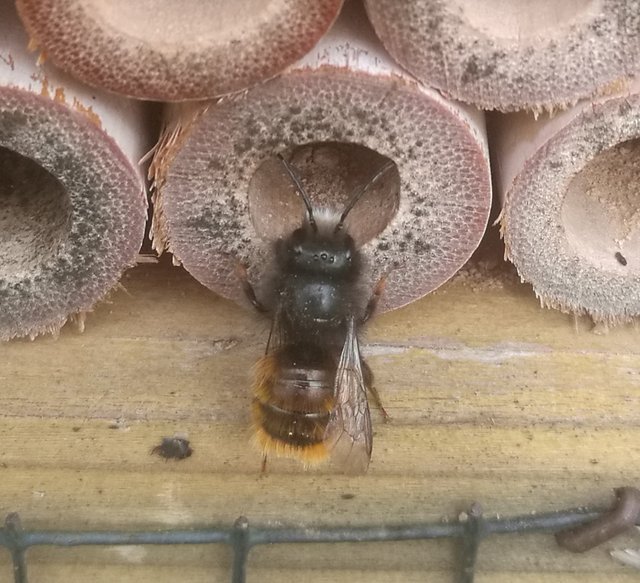
I had never seen an artificial hive. Interesting. For the rest ... spring is a joy
Actually, in case of the solitary bees it is a "hive" for their eggs only (as described in the article) ... the bees themselves aren't living in the bamboo tubes (just sometimes they may temporarily hide there, if they get caught by bad weather).
These types of bees also don't produce honey, but they are very important for the pollination of flowers.
I know there is a lot of concern about the survival of the bees. A world without bees is practically dead ... Every way to help them is therefore important!
Toll das Bienenhotel! Wir haben so etwas ebenfalls auf unserer überdachten Terrasse, allerdings ungeplant in Form eines IVAR-Regals. Die freien Bohrlöcher für die Metallbolzen haben sich als sehr beliebter Eiablegeplatz herausgestellt und werden schon in Kürze alle wieder zugemörtelt sein. Interessant, dass die erste Kammer stets leer gelassen wird.
Grüsse!
I do not know what the meaning
Sorry, I try translate for you @agrojaya :
Thank you brother
You are welcome...
Der Beitrag passt doch wunderbar zum Wetter heute und zur Vorhersage für die nächsten Tage - wenn ich richtig informiert bin zumindest :-D
Ich vermute, das Bienenhotel ist im Gegensatz zu einem "richtigen" Bienenstock dann offen ist? Oder ist das eine andere Gattung von Bienen, die keine Staaten bilden? Edit: Wer lesen kann bzw. Links anklickt, ist wohl mal wieder stark im Vorteil. Ich ziehe die Frage zurück ;-)
Ich finde das ja wieder faszinierend, mit der leeren Kammer und auch, wie die Bienen sich dann entwickeln und ohne weitere "Erziehung" wissen, wo und wie sie ihre Höhle verlassen können und was sie dann zu tun haben. Also zur Fortpflanzung bzw. zum Ernähren.
Sehr schöne Bilder, bei uns im Garten sieht es ähnlich aus.... bis auf die Bienan natürlich 😁
Oh! There are various kinds of flowers in your garden. They are very beautiful by their own styles and have bright and lovely colors. These can relax my eyes very much. You have really nice garden indeed.
It’s great that you made the nest from bamboo for those bees. There are plenty of bees, they are very big and amazing.
Thanks so much for sharing! ;)
The blue flowers look like "blue bonnets." Spring time is the best, I love seeing everything come back to life. Awesome capture of these flowers!
Nice to read that you like my photos! :)
Der Frühling mit seinen tollen Farben ist wieder da!
Ich mag ihn besonders gern, denn er bringt nach einer langen Grau-Zeit endlich wieder Leben und Frische in die Natur.
Winter ist auch traumhaft schön, aber nur wenn man wirklich Schnee hat und nicht so einen Matsch, wie in den meisten Teilen Deutschlands...:D
Hier in Kanada dauert es wohl noch ein paar Wochen bis sich der Frühling blicken lässt - gerade in den Rockys sind die Seen noch immer gefroren :)
You are so blessed to live in a place where nature organically grow, the flowers seemed to be growing same as the wild ones. I think we also have those kinds of flowers here in Singapore, but it's inside a shelter, and we need to pay to see the exhibit of flowers.
I'm impressed on how you create a temporary shelter for the bees, which in turn help your garden on the pollination of the flowers. It's sustainable way of living alongside nature.
I had fun & I enjoy reading your blog, the photos are awesome and I get to learn new things that I wouldn't learn here in the city :-) Thanks for sharing.
These bees are looks like the honey bees but as much as I know these bees don't live in colonies like a honey bee. Are they produced honey too?
As described in the text these bees are solitary bees not living in colonies. They also don't produce honey but are very important for the pollination of flowers.
OK, thanks for the information :)
Wunderschöne Aufnahmen! Ich war heute morgen auch unterwegs, hab aber noch gar nicht nachgesehen was auf meinem Speicherchip zu finden ist.
Freut mich sehr, dass sie dir gefallen! :)